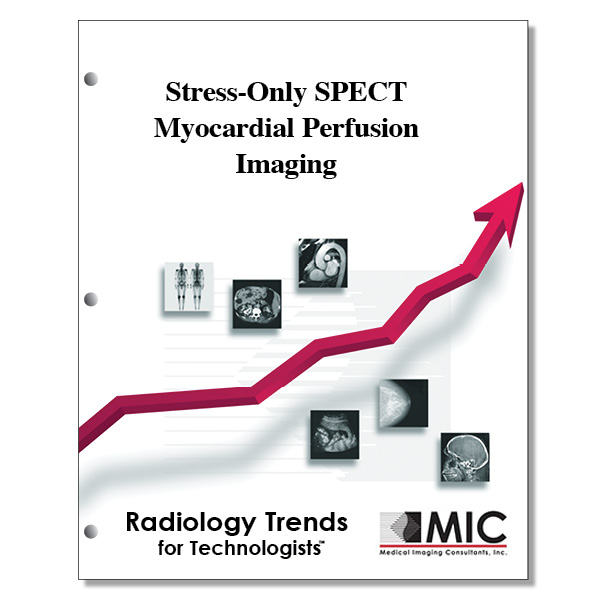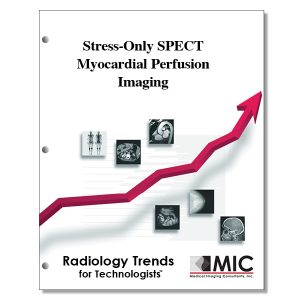

Stress-Only SPECT Myocardial Perfusion Imaging
A review of the accuracy, patient outcomes, implementation strategies and new developments associated with stress-only myocardial perfusion imaging.
Course ID: Q00435 Category: Radiology Trends for Technologists Modalities: Cardiac Interventional, Nuclear Cardiology, Nuclear Medicine2.5 |
Satisfaction Guarantee |
$29.00
- Targeted CE
- Outline
- Objectives
Targeted CE per ARRT’s Discipline, Category, and Subcategory classification for enrollments starting after May 9, 2023:
Nuclear Medicine Technology: 2.50
Procedures: 2.50
Cardiac Procedures: 2.50
Outline
- Introduction
- Features of SO Myocardial Perfusion Imaging (SO MPI
- Feasibility and Rationale of SO MPI
- Attenuation Correction in Conjunction with SO MPI
- Electrocardiographic gating value in SO MPI
- Accuracy and outcomes of patients undergoing SO MPI
- SO MPI in Diabetic Patients
- SO Protocol: Patient Selection and Protocol Choices
- Appropriate Patients for SO Protocol
- Higher Vs Lower Radiotracer Dose
- Definition of ìNormalî Stress-Only Result
- Abnormal SO Myocardial Perfusion Imaging and Decision Making
- Case 1
- Case 2
- Radiation Exposure and the Use of SO MPI
- Limitations of SO Myocardial Perfusion Imaging
- Future Directions/Newer Developments
- Stress-Only (SO) Protocol with PET Myocardial Perfusion Imaging
- Conclusions
Objectives
Upon completion of this course, students will:
- provide an accurate description of SPECT-MPI
- identify reasons why Tc-99m tracers are superior to Tl-201
- understand the barriers to adopting SO SPECT-MPI
- learn the history of SO SPECT-MPI
- describe the rest rate in SO SPECT-MPI without AC or prone imaging
- identify physician confidence level with SO SPECT-MPI
- understand the benefit of CTAC over emission based AC
- understand the benefit of CTAC over prone imaging
- learn about ECG gating as it relates to SO SPECT-MPI
- understand the benefits of wall motion analysis
- describe defects in SO SPECT-MPI (non-AC) as it relates to gated data
- describe defects in SO SPECT-MPI (with-AC) as it relates to gated data
- identify diagnostic comparisons between SO SPECT-MPI and the conventional procedure
- describe wall thickening analysis as it relates to SO SPECT-MPI
- understand balanced ischemia and ways to minimize its impact
- identify cardiac event rates among normal SO SPECT-MPI cases
- be familiar with mortality rates among normal SO SPECT-MPI cases
- understand the relationship between SO SPECT-MPI and obesity
- understand outcomes of normal SO SPECT-MPI studies from the ED
- describe the improvement between NC SPECT-MPI and AC SPECT-MPI
- learn about diabetic patients (CHD equivalent) and SO SPECT-MPI
- identify the best group for a SO SPECT-MPI protocol
- understand the best pathway for patients who had other cardiac testing
- understand the benefit of using high dose SO SPECT-MPI
- understand the benefit of using low dose SO SPECT-MPI
- describe the impact of “shine through” and “cross talk” from radiotracers
- understand the minimum ratios and wait time for tracer injections
- know the best course of action with normal MPI and abnormal ECG
- understand ASNC guidelines that all labs should be striving to obtain
- describe the benefit of SO SPECT-MPI for in-patient clinics
